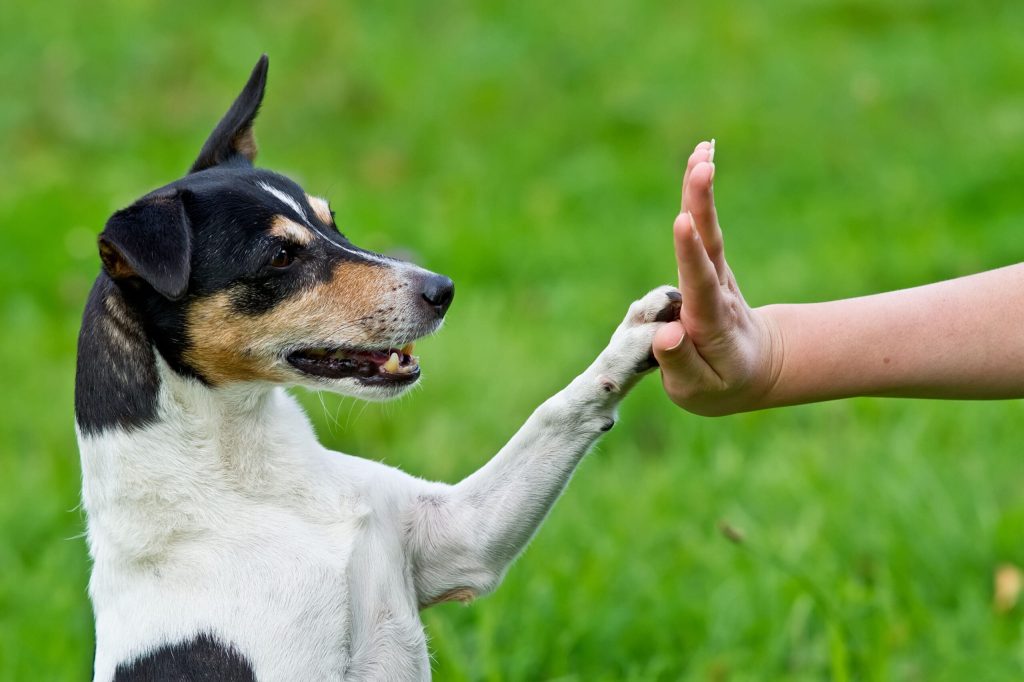Positive Reinforcement Techniques for Dogs Build Bonds Through Training

In the world of pet ownership, understanding how to effectively communicate with and train your dog can make all the difference in building a strong, lasting relationship. Positive reinforcement techniques are not only increasingly popular but also highly effective in fostering trust and respect between pet and owner. By focusing on rewarding desired behaviors, you create an environment that encourages learning while reinforcing the bond you share.
As pet lovers become more aware of the benefits of humane training methods, the need for effective techniques is greater than ever. Here are some compelling reasons to explore positive reinforcement:
- Enhances communication: Encourages clear signals between you and your dog.
- Improves behavior: Aids in correcting unwanted behaviors by redirecting focus.
- Fosters trust: Builds a sense of security and companionship.
- Encourages engagement: Makes training enjoyable for both parties.
- Promotes mental health: Stimulates your dog’s cognitive abilities and confidence.
As we delve into the top 5 positive reinforcement techniques, you’ll discover how they can transform your training approach and deepen your bond with your canine companion. Get ready to unlock the secrets of effective dog training through the power of positivity!
SEE ALSO: Click here to read another article
Top 5 Positive Reinforcement Techniques for Dogs: Building Bonds Through Education
The commitment to understanding your dog is just as crucial as the training method you select. Positive reinforcement techniques are not only effective learning tools but they also strengthen the bond between you and your furry friend. In this article, we will explore five essential techniques, ranking them from least to most effective, to enhance communication and training with your canine companion.

5. Clicker Training: A Simple But Powerful Method
Clicker training is a widespread method based on the principles of operant conditioning, a concept introduced in the 1930s by B.F. Skinner. This technique involves reinforcing your dog’s desired behavior with a distinct sound produced by a clicker, which lets them know they’ve done something right. The clicker becomes a signal to the dog that a reward is coming, fostering an environment of clear communication.
The beauty of clicker training lies in its precision and consistency, allowing the handler to mark the exact moment a behavior is correctly performed. Once the behavior is established, the use of rewards can be varied—be it treats, toys, or praise—to keep the dog engaged and prevent dependency on any single type of reward.
To implement clicker training effectively, consider following these steps:
- Introduce the Clicker: Begin by clicking and immediately offering a treat to establish a connection between the sound and the reward. Repeat this step several times until your dog anticipates a treat after the click.
- Choose a Behavior: Focus on a simple command such as “sit” or “down.” Start with basic commands to build on the dog’s confidence and understanding.
- Click and Treat: Click at the moment your dog completes the command and follow it up with a treat. Timing is essential here—click as soon as the desired behavior is performed to reinforce the connection between action and reward.
Clicker training is a great starting point for those new to positive reinforcement. While it may not be the most advanced technique, it lays the groundwork for further training, helping dogs grasp the concept of cause and effect in learning.
4. Treat Training: The Classic Approach
Treat training is perhaps the oldest form of positive reinforcement. It capitalizes on a dog’s natural inclination towards food rewards. Such training involves rewarding your dog with food treats for exhibiting desired behaviors. It is highly effective but should be used judiciously to avoid overfeeding or creating a dependency on treats. To maximize effectiveness, treat training requires careful consideration of the type, timing, and frequency of the rewards.
To utilize treat training effectively:
- Choose Healthy Treats: Opt for low-calorie options or small-sized treats to prevent excessive weight gain. This will allow you to reward more frequently without compromising your dog’s health.
- Timing is Key: Offer treats immediately after the desired behavior to reinforce the connection. A delay can diminish the association between the action and reward.
- Gradually Reduce Treats: Once a behavior is established, gradually phase out the treats, replacing them with praise or toys to ensure your dog will respond to commands even without food rewards.
This technique builds trust and rewards good behavior, making it a classic choice for dog owners. It taps into their immediate reward system, facilitating quicker learning and smoother communication.
3. Praise and Affection: Emotional Bonding
Praise and affection as a technique focus on verbal affirmations and physical touch, such as petting or cuddling, to encourage good behavior. Dogs thrive on social interaction and respond positively to their owner’s emotion and engagement. This approach zeros in on the emotional aspect of learning, harnessing the power of your relationship as a motivator.
To practice praise and affection:
- Be Specific with Praise: Use enthusiastic and specific language, such as “Good job!” or “Well done!” to indicate the exact behavior you are reinforcing. Consistency in your tone can significantly enhance your dog’s learning.
- Combine with Other Techniques: Use praise alongside clicker training and treat rewards for a more effective approach. This multifaceted method strengthens the learning process.
- Establish a Consistent Routine: Ensure that your dog receives reassurance and affection at regular intervals, integrating it into your daily interactions.
This technique not only reinforces good behavior but also helps in strengthening the emotional connection between you and your dog, creating a nurturing environment that encourages learning and cooperation.
2. Interactive Play: Training Through Fun
Engaging your dog in interactive play is a fantastic method of positive reinforcement. By making training fun, dogs are more likely to want to participate. This technique incorporates toys and games to reward good behavior. Games serve as a dual-purpose tool, providing mental stimulation and physical exercise.
Interactive play also nurtures problem-solving skills and encourages dogs to learn through trial and error, making the learning experience both enjoyable and educational.
To effectively use play as reinforcement:
- Incorporate Toys: Use favorite toys, tug ropes, or balls to motivate your dog. Toys that challenge your dog intellectually, like puzzle toys, can also be highly rewarding.
- Transform Commands into Games: Incorporate commands such as “fetch” or “stay” into playtime for reinforced learning. Introducing cues during play solidifies their understanding and application in various contexts.
- Set Aside Quality Playtime: Dedicate time each day to focus on playful interactions, reinforcing your bond as well. This promotes an environment where learning is associated with fun, making your dog more receptive to training.
This approach not only strengthens training but also enriches the dog’s physical and mental health. Regular interactive play is essential for a dog’s overall well-being, fostering a happy and healthy lifestyle.
1. Consistency and Patience: The Ultimate Toolkit
While all the techniques mentioned are crucial, the most important elements in positive reinforcement are consistency and patience. These two traits form the backbone of successful training and bonding. Without consistency in commands, cues, and rewards, dogs may become confused, leading to ineffective training. Conversely, patience allows you to work through challenges without frustration, maintaining a positive and supportive learning environment.
To master consistency and patience:
- Be Consistent in Commands: Use the same words, tone, and gestures for each command to avoid confusing your dog. Consistency helps in establishing clear expectations and fosters quicker learning.
- Stay Patient: Recognize that each dog learns at its own pace. Celebrate small achievements and build upon them gradually. Patience fosters resilience and encourages a focused, stress-free learning process.
- Maintain Regular Training Sessions: Short, frequent training sessions are more effective than extended, sporadic ones. Dogs, like humans, benefit from repetition and regular practice enhances retention.
Dynamic training rooted in these two elements leads to a well-behaved, balanced dog, and a mutually rewarding relationship. Applying these techniques with commitment will create a framework for lifelong learning and companionship. Encourage your curiosity about canine psychology and adapt your training approach as your understanding grows. With the application of these effective methods, both you and your dog will enjoy an enriched, harmonious, and fulfilling life together.
| Category | Details |
|---|---|
| Effective Learning Techniques | Positive reinforcement instills desirable behaviors through immediate rewards, making learning both effective and enjoyable for dogs. |
| Stronger Bonding | Utilizing positive techniques fosters trust and understanding, leading to a deeper emotional connection between the dog and the owner. |
| Improved Behavior | When dogs respond to praise and rewards, their overall behavior can significantly improve, leading to a more harmonious household. |
| Versatile Applications | Positive reinforcement techniques can be adapted for a variety of situations, from basic obedience to complex trick training. |
As dog owners delve into the world of training, they often encounter various methodologies aimed at maximizing their pet’s learning potential. One approach that stands out is positive reinforcement, a technique that emphasizes rewarding good behavior rather than punishing undesirable actions. This method not only simplifies the training process but also strengthens the bond between dogs and their owners. When a dog successfully follows a command and is met with enthusiastic praise or a favorite treat, they are more likely to repeat that behavior in the future. Such affirmative experiences create an environment where dogs feel comfortable and encouraged to engage in learning, paving the way for trust to flourish. The implications of positive reinforcement extend beyond mere obedience. Dogs trained through such methods often display enhanced emotional stability and a sense of security within their home. By engaging in this affectionate and supportive training style, owners can foster a respectful relationship that leads to a well-rounded and contented canine companion.Moreover, positive reinforcement isn’t limited to basic commands; its versatility can be illustrated in its application across various contexts, from teaching a puppy to sit to helping an older dog adjust to life changes. Pet owners can effortlessly integrate these techniques into daily routines. For instance, rewarding a dog for sitting patiently while waiting for food reinforces calm behavior, thus improving the dog’s demeanor overall.Understanding the mechanisms and benefits of positive reinforcement will not only enhance the training journey but also lead to meaningful interactions between humans and their four-legged friends. The journey towards building a robust bond through education continues to reveal layers of discovery, urging owners to further explore the depths of their dogs’ capabilities.
RECOMMENDED: Check out this similar article
Frequently Asked Questions about Positive Reinforcement Techniques for Dogs
What is positive reinforcement, and how does it work with dogs?
Positive reinforcement is a training technique that involves the use of rewards to encourage desired behaviors in dogs. When a dog performs a desired action, such as sitting or staying, the behavior is immediately followed by a reward, which could be a treat, praise, or playtime. This method works on the principle of rewarding good behavior, making it more likely to be repeated. Studies show that positive reinforcement is an effective and humane approach to training, fostering a stronger bond between dog and owner.
Are there specific types of rewards that are more effective for positive reinforcement?
The effectiveness of a reward largely depends on individual dog preferences. Commonly used rewards include treats, verbal praise, toys, and affection. The key is to identify what motivates your dog the most. For example, some dogs may respond more energetically to a game of fetch than to a treat. Consistent use of chosen rewards helps in reinforcing behavior, ensuring that the dog connects the action with the positive outcome. Remember to keep rewards immediate and consistent to maximize their impact.
How can positive reinforcement techniques improve the bond with my dog?
Using positive reinforcement techniques can significantly enhance the bond between you and your dog. This method encourages mutual respect and understanding, as training sessions become less about correction and more about cooperation. By focusing on rewarding good behavior, dogs feel safer and more confident, leading to a more harmonious relationship. Engaging in this form of training also provides mental stimulation for dogs, which is an essential part of their well-being. A strong bond rooted in trust and encouragement ensures a happy and well-adjusted pet.
Is it possible to eliminate bad behavior in dogs using positive reinforcement alone?
While positive reinforcement focuses on promoting good behaviors, it can also be effective in reducing bad behaviors when used correctly. This involves redirecting the dog’s attention to alternative, appropriate actions and rewarding them for those. Consistency is crucial in this process, and it might take time for noticeable changes to occur. However, in some cases, a combination of training methods might be needed for persistent behavioral issues. Consulting a professional dog trainer can provide tailored strategies for specific challenges, ensuring a comprehensive approach to behavior management.
Are there any limitations to positive reinforcement training?
While positive reinforcement training is highly effective and favored for its ethical approach, it may not always provide quick fixes for all behavioral problems. Patience and consistency are key, and results may vary depending on the dog’s temperament and history. Some behaviors might require alternative strategies or professional intervention to address underlying issues comprehensively. That said, the long-term benefits for the dog’s obedience and the owner-dog relationship typically outweigh these limitations, making it a valuable tool in any training regimen.
YOU MAY ALSO LIKE: Read this other article
Conclusion: Building Bonds Through Positive Reinforcement
The exploration of positive reinforcement techniques for dogs shines a light on the profound impact such methods have on pet education and relationship building. By employing rewards and praise rather than punishment, positive reinforcement not only fosters desirable behavior in dogs but also strengthens the bond between pet and owner.
Throughout this article, we highlighted the top techniques, including clicker training, treat rewards, and consistent verbal cues, as powerful tools in shaping a dog’s behavior. Clicker training, for instance, provides precise feedback, timing reward perfectly with the desired action, thus enhancing the learning process. Treat rewards cater to a dog’s natural motivations, ensuring training remains a fun and engaging activity. Meanwhile, verbal cues establish a direct line of communication, offering clarity and understanding between humans and their canine companions.
The Science Behind Effective Training
Research underscores that positive reinforcement is rooted in scientific principles, making it an effective approach to dog training. The psychological benefits extend beyond immediate behavioral improvements. It reduces anxiety, increases trust, and cultivates a lasting sense of companionship. When owners invest time and patience into these techniques, they reap the rewards of a well-behaved and emotionally balanced pet.
In conclusion, adopting positive reinforcement techniques not only facilitates successful training outcomes but also enhances the overall pet-owner experience. This methodology promotes a more harmonious living environment, where mutual respect flourishes. As more pet owners are inspired to integrate these practices into their routines, the potential for nurturing well-rounded, happier dogs becomes ever more attainable. For those eager to delve deeper, a world of resources awaits to further enrich their understanding and capability in implementing these transformative techniques.


